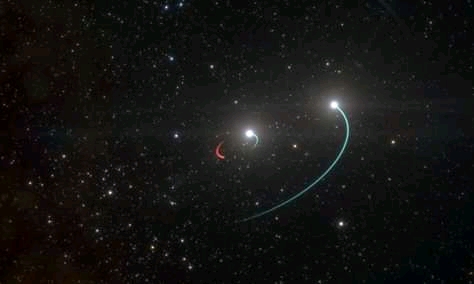The Solar Winds Hitting Earth Are More Hotter Than Before, And We May Finally Know Why.
Our planet is constantly bathed in the winds coming off the sphere at the center of our solar system. But even though our sun itself is so ridiculously hot, once the solar reached earth, they are usually hotter than they should be and we might actually know why.
The particles making up the plasma of the sun's heliosphere cool as they spread out. The problem is that they take their time doing so, dropping in temperature for slower than models predict.
But there are many important properties of this plasma which are still not well understood, says physicist stas Boldyrev from the University of Wisconsin in Madison. Initially, researchers thought the solar wind has to cool down very rapidly as it expand from the sun, but satellites measurements shows that as it reaches the earth, its temperature is 10 time larger than expected.
The expansion process itself has long been assumed to be subjected to adiabatic law, a term that simply means heat energy isn't added or removed from a system.
Unfortunately, an electron's journey is anything but simple, shoved around at the mercy of vast magnetic field like a roller coaster of hell.
Just to complicate matters further, thanks to its tiny mass, electrons get a good head start over heavier ions as they shoot forth from the sun atmosphere.
Eventually, the growing attraction between the two opposing charges takes over the inertia of those flying electrons, pulling them back to the starting line such returning electrons are reflected so that they stream away from the sun, but again they cannot escaoe because of the attractive electric force of the sun, says Boldyrev. So, their destiny is to bounce back and forth, creating a huge population of trapped electrons.
Boldyrev and his crew recognized a similar game inside an apparatus used to study plasma called mirror machine.
The particles making up the plasma of the sun's heliosphere cool as they spread out. The problem is that they take their time doing so, dropping in temperature for slower than models predict.
But there are many important properties of this plasma which are still not well understood, says physicist stas Boldyrev from the University of Wisconsin in Madison. Initially, researchers thought the solar wind has to cool down very rapidly as it expand from the sun, but satellites measurements shows that as it reaches the earth, its temperature is 10 time larger than expected.
The expansion process itself has long been assumed to be subjected to adiabatic law, a term that simply means heat energy isn't added or removed from a system.
Unfortunately, an electron's journey is anything but simple, shoved around at the mercy of vast magnetic field like a roller coaster of hell.
Just to complicate matters further, thanks to its tiny mass, electrons get a good head start over heavier ions as they shoot forth from the sun atmosphere.
Eventually, the growing attraction between the two opposing charges takes over the inertia of those flying electrons, pulling them back to the starting line such returning electrons are reflected so that they stream away from the sun, but again they cannot escaoe because of the attractive electric force of the sun, says Boldyrev. So, their destiny is to bounce back and forth, creating a huge population of trapped electrons.
Boldyrev and his crew recognized a similar game inside an apparatus used to study plasma called mirror machine.
This machine contain of magnetic mirrors or magnetic traps, these device reflective nature is created as streams of plasma passing through the bottle pinch, in a way that the particles reflect back inside again. But some particles can escape and when they do, they stream along expanding magnetic field lines outside the bottle.
Boldyrev and his colleagues suggest the population of trapped electrons play a major role in the way electrons distribute their heat energy.







Comments
Post a Comment